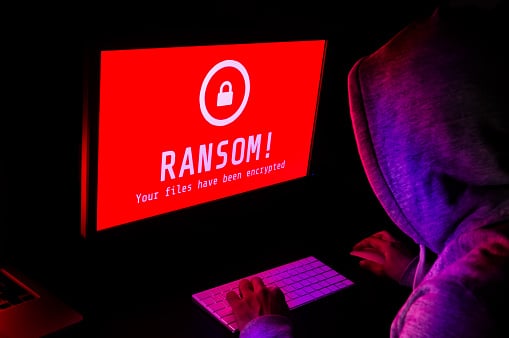Microsoft Windows Outage CrowdStrike Analysis Highlights Security Risks An unexpected [...]
Technology is advancing faster than ever before. We can now connect and create on a broader scale than many ever thought possible. However, as our technology advances, people are questioning the security of these cutting-edge systems. While most of our private and confidential information is thought to be protected, the truth is disheartening.

Hard drives have been replaced by the easily shareable cloud, and its improvements continue to help us send, share and store documents. While we might not fully understand the cloud, we trust it. In fact, most companies today use cloud-based email systems to communicate with others. However, hackers have found ways to get into these email systems and encrypt documents, so we can’t access them.
This scary new ransomware strain was created by good hackers, and unfortunately, adopted by bad hackers. They want your money, and they know the best way to get it is to take away or “temporarily block” your email system until you pay to unblock it.
There are hundreds of successful criminal hackers using this business model to corrupt and steal cloud-based emails. We’re all at risk– This form of ransomware has worked its way into our inboxes.
How Does Ransomware in Real Time Work?
Let’s get back to the basics of what ransomware is and how it works. Ransomware is a type of malware. Its sole purpose is to block users from their data until a ransom is paid.
Ransomware is effective because of it’s difficult to unblock data without paying the ransom. The only other option, besides paying, is restoring a recent backup. This usually isn’t an option for most because of how often backups fail.
Hackers locate a target, (typically multiple ones) and bypass verification of both Google and Microsoft 365 email applications. They then tempt users with “anti-spam” service emails. It works with any cloud-based email service that uses OAuth to grant an application access to information without requiring passwords.
Employees are likely to click accept these emails because they trust their email systems to filter out messages that could potentially harm their accounts.
So now that your employee has accepted this phishing message, and all of their emails are encrypted, what do you do? The hackers will offer to “decrypt” the user’s emails at a price around $300-$400. If everyone in the company accepts the message, you’re looking at a major financial loss.
The best thing to do is to be prepared. Take the initiative and equip your employees with the knowledge and readiness to recognize and avoid phishing messages. Do this before it’s too late.
How to Avoid a Hack
To protect your company and documents, you must determine which employees are likely to accept phishing emails. Then you should train them to recognize this threat.
You must stay one step ahead of the bad guys. Preparing and training your team is the only way to fully avoid potential security attacks.
Like we mentioned before, this ransomware strain is in its early stages. But with criminal hackers successfully scoring major money from attacking big businesses, as well as everyday users, other hackers and cyber gangs are quickly taking notice. The effectiveness of ransomware is only encouraging more hackers to create and use this strain.
Ransomware isn’t going anywhere anytime soon. It’s only growing stronger. The best thing you can do for your company is to be prepared and not fall victim to these attacks.




